Recording Spotlight: Daft Punk – Random Access Memories
Daft Punk’s 2013 smash-hit record had a five-year gestation period, during which the robots decided to shun software and craft intricate music using hardware technology and live musicians. In the first of a new series of recording spotlights, we take an inside look at the making of a modern classic… With a career spanning 25 […]
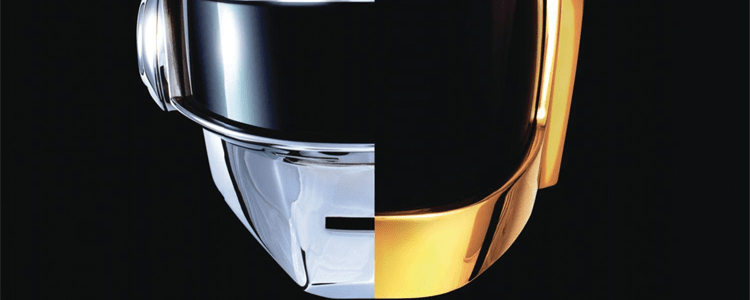
Daft Punk’s 2013 smash-hit record had a five-year gestation period, during which the robots decided to shun software and craft intricate music using hardware technology and live musicians. In the first of a new series of recording spotlights, we take an inside look at the making of a modern classic…
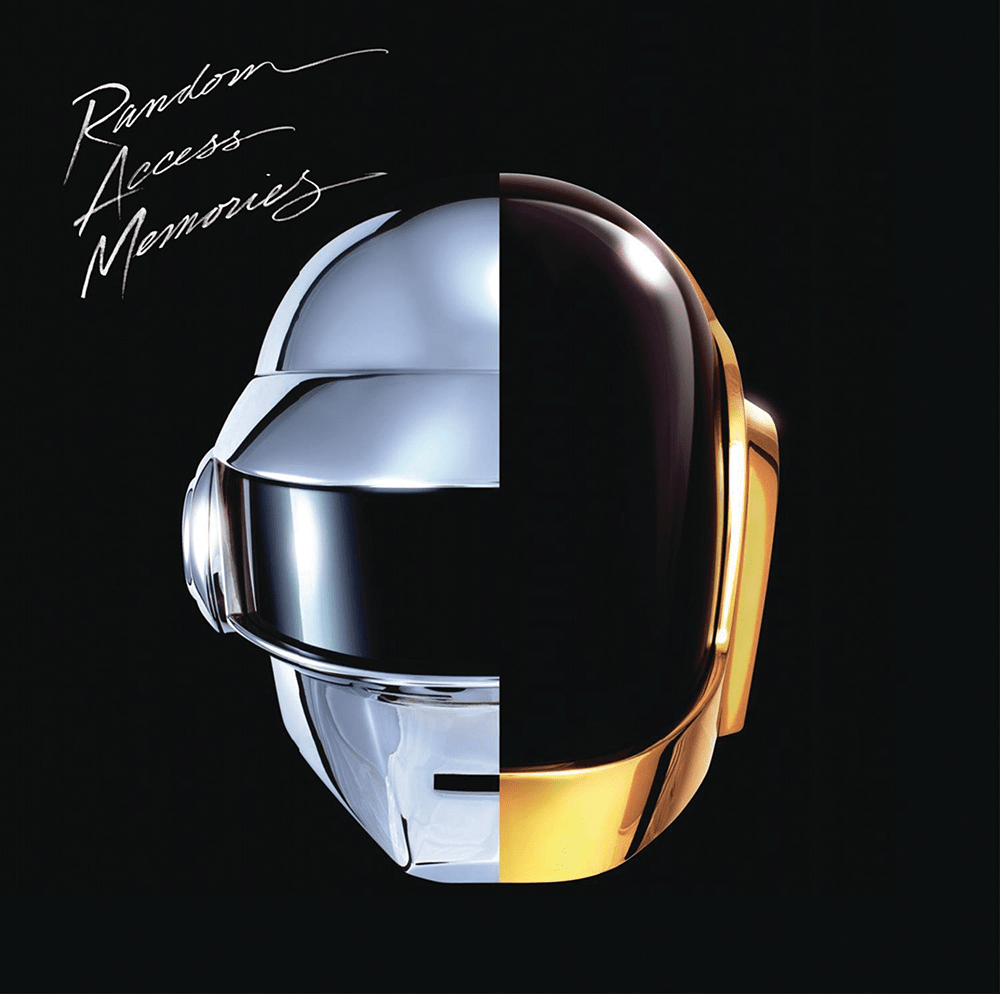
With a career spanning 25 years, electronic-music duo Daft Punk (aka Thomas Bangalter and Guy-Manuel de Homem-Christo) have been instrumental in pushing electronic music into the mainstream. They’re also one of the few popular acts that retain an air of mystique – their robotic alter egos (and futuristic helmets) have kept their personalities private, while their infrequent interviews leave their music to speak for itself.
Following their third full-length LP Human After All in 2005, the duo decided to embark on a series of live dates. Although initially set to be a short-term affair, the Alive tour became a near-two-year undertaking. Joining them on the tour was engineer Peter Franco, who engineered their Grammy Award winning live album Alive 2007 and went on to work on Random Access Memories. We spoke to him about his tour memories, his first encounter with ‘the robots’ and how the record’s concept developed.
“I first met Daft Punk in 2005, when they were preparing their live tour,” Peter tells us. “They hadn’t performed in 10 years at that point, so they were kind of looking for a crew. They needed someone to mix their front-of-house. I had done a tour with Martin Phillips, who was doing all the lighting for their videos, so they’d already asked him if he’d help design the live show. They asked him if he knew any front-of-house engineers and he suggested me. He called me one day and just said: ‘I know a couple of guys who want to do a short tour, would you be up for it?’.
It was originally scheduled to be just eight shows, but I met Thomas and Guy-Manuel – they asked me what I’d done. When I told them I’d done Paul Williams’ front-of-house their eyes widened and they were pretty impressed. Then we had a long chat about how much we all loved Paul Williams,” Peter remembers.
“The eight shows that they’d planned eventually turned into something like 80 shows! We toured for two years, pretty much; we started in 2006 and it ended at the tail end of 2007. I got to know the guys so closely during that time. That led to a lot of things. Thomas really talked a lot about gear during that tour and at the outset we decided to utilise an analogue console to achieve a warmer sound on the tour, and not to use digital technology, because of the reason of conversion.
“At that time, there wasn’t really anything close to an analogue console (in the digital realm) as far as sounding good was concerned. It was night and day. We toured with a classic Midas Heritage console. So that was really the beginning of the analogue-only concept that carried through to Random Access Memories.”
RAM-ifications
Once the tour had completed, early in 2008, Daft Punk began to experiment with some initial ideas that would eventually evolve and be reshaped into the tracks that made up the record.
Peter remembers that “the early ideas were generated with synths and just recording music in the traditional way. We decided to record on tape and experimented with different speeds. We prepared tape for Pro Tools, so getting that conversion right was important. The guys really got a handle on what tape was doing to their recorded music. It was awesome, though – a great little test.” The analogue synths that were used during the sessions were impressive, from a Roland Jupiter-6 to a Sequential Circuits Prophet-6, as well as a Yamaha CS-80.
Peter remembers how one of the record’s standout tracks was conceived during this period: “The music that ended up being Giorgio By Moroder was created then – the guys really loved Giorgio, so at one point, we were doing some arpeggios on the Prophet-6 and a Juno-106 and we kind of started messing around with that. I don’t think it was intended to be a direct homage, but it was definitely inspired by Giorgio. We had a bunch of amps out, as well as a bunch of mics in different positions… the end result heard on the final track was recorded then.”
Analogue love
The unique feel of the album was beginning to take shape, with tracks such as The Game Of Love utilising their now-ubiquitous vocoder. When asked in an interview with GQ which of the two members provided lead vocals for each track, Bangalter replied that it didn’t matter – emphasising their strength as a creative unit. Franco recalls that, up until that point, Thomas and Guy-Manuel recorded in more conventional studio environments and that “going totally analogue created a completely different perspective of how you make an album. They were used to smaller scale setups, so to go to a large studio with these large old consoles was a totally different approach for them.
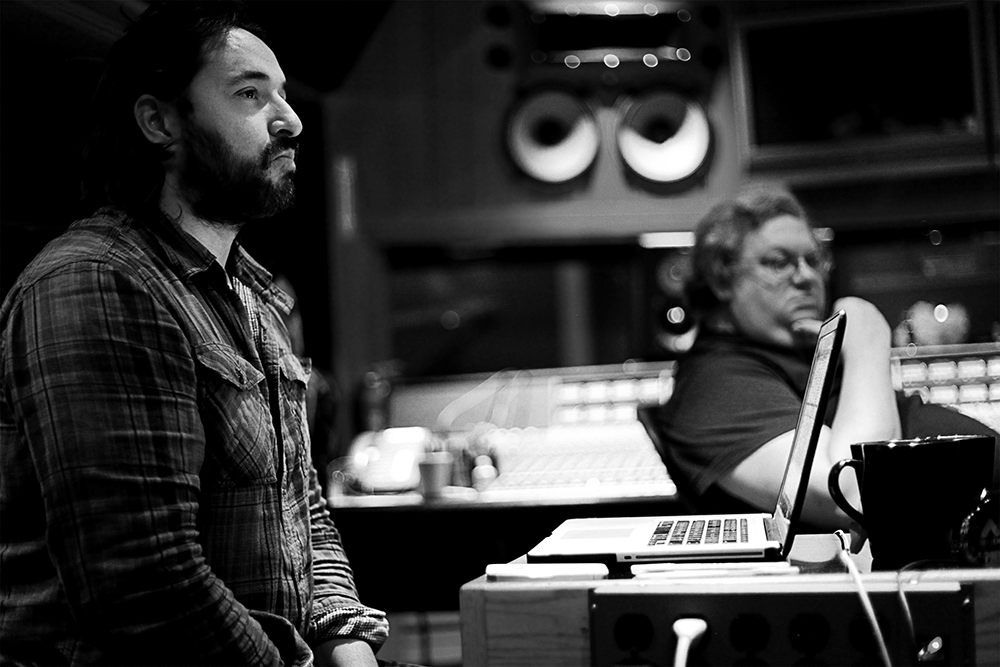
Mick Guzauski (the fantastic mixing engineer) taught us a great deal about this equipment and how best to use it. We all learned from him.” Another key element of the recording of the album was the increased presence of guest musicians, with the likes of Nile Rodgers providing the slick guitar on Get Lucky and Chilly Gonzales providing keys on Give Life Back To Music and Within, not to mention the roll call of guest vocalists, including the likes of Pharrell Williams, Julian Casablancas, Noah Lennox of Animal Collective and Paul Williams.
The increased presence of additional musicians and collaborators was partly motivated by their work on the soundtrack to Tron: Legacy – a project undertaken partway through the composition process for Random Access Memories.
“Obviously, that delayed the project,” Peter says. “But that was important for them and useful for R.A.M., as they worked on a series of orchestral arrangements which required communicating with live musicians directly. That really paved the way for a lot of the approach for this album. Working with an orchestra was a very different experience – scoring and so on!”
Get funky
The record’s completely analogue concept require a painstaking, occasionally fiddly, approach. “The record was completely analogue…” Peter continues. “Aside from using Pro Tools as an archival tool, it was all traditional – and all about performances, capturing it the way it’s supposed to be. That was important to the concept of the record. The hard part, of course, was listening to all the takes we did – we had to listen to each one and mix each instrument from the analogue source. Finding the right performances for the different sections of the songs was tricky. This was all part of the reason why the album look so long to make.”
We asked Peter which track in particular from Random Access Memories was the most complicated to create?
“Oh, Touch, for sure,” he recalls. “I think that track was the most interesting when it came to mixing. The track itself has these three different, distinct sounds, so we kind of slowly mixed that one in, like, phases. There were some very different vibes in that track. It would have been really difficult to mix it all in one piece, so we broke it up and kind of merged it together at the end. So it was pretty interesting how that worked out. The track has orchestra and a lot of percussion. Paul’s vocals and a lot of modular. That one was the most difficult to get right, I think.”
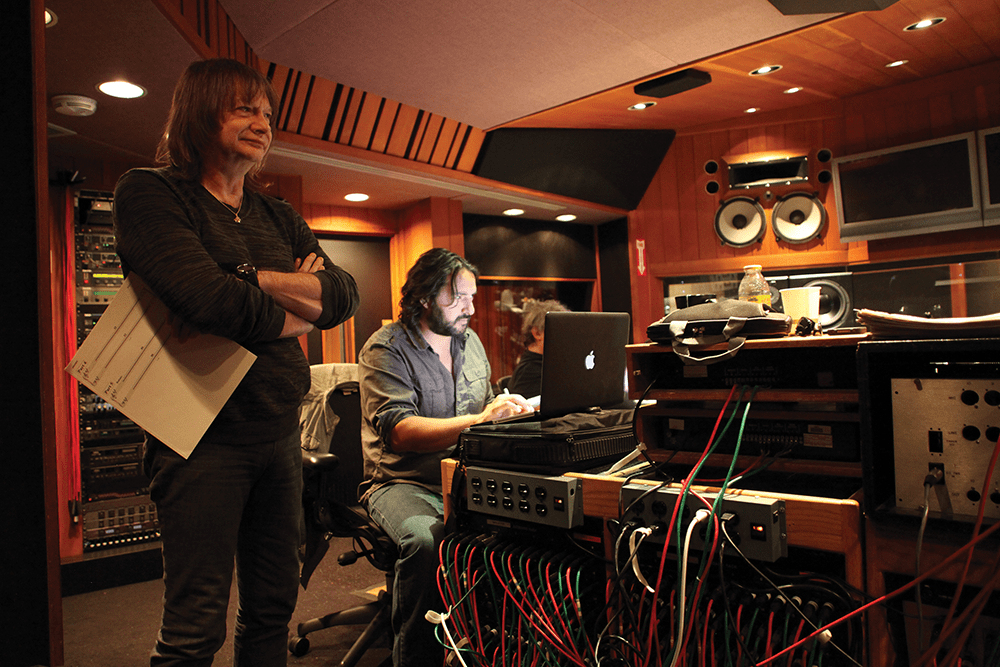
When asked about the genesis of the album’s signature track and one of the most widely played singles ever, Get Lucky, Peter recalls that the whole vibe and feel of the track came completely out of the blue. “Get Lucky is interesting…” Peter tells us. “It was one of those moments that happens in the studio. It’s one of those songs that just comes out of nowhere and that one was ‘the song’. The guys met with Nile Rodgers in New York at Electric Lady Studios and really hit it off, they were really stoked to have this legend come in and do some guitar. It was one of the few sessions there. They laid down a bunch of guitar because it was the right moment – they were there and Nile was willing to play.
“He did some work on both Get Lucky and the opening track Give Life Back To Music. For Get Lucky, he turned out this wonderful piece of music on guitar. He brought a very distinct feeling to it, I think the song had legs before that – but really, Nile’s riff added so much to it and gave it that funky life.”
Peter remembers that the final piece of the puzzle required some delicate mixing to get perfect. “Once we had the music, then Pharrell came in and started doing his thing. Getting those vocals right with Pharrell was important and we did a great job, I think, in getting them sounding right. Producing the melodies and hooks correctly was an important part of the process, too.
“All of a sudden, you’ve given life to this thing that became huge – and we knew we had a great song, but we didn’t know it’d become quite as big as it became. Columbia came in at the end of our process and were totally blown away by the whole record.”
Key personnel

Daft Punk
French house duo Thomas Bangalter and Guy-Manuel de Homem-Christo’s strictly analogue approach to their fourth album’s recording was a fresh creative approach for the French duo, who’d formed way back in 1993. Their first three records fused funk, disco, synth pop and techno and utilised both software and hardware instrumentation. With Random Access Memories, they decided to completely do away with
software (save Pro Tools for archiving) and use traditional recording techniques.
Nile Rodgers
Chic legend Nile Rodgers is one of the most iconic and influential guitarists and songwriters of his generation. He’s worked with some of the biggest artists in the history of music, including Madonna, David Bowie, Duran Duran and Diana Ross. His work on Random Access Memories, and in particular his distinctive guitar playing on Get Lucky, helped to elevate the album’s status and added authenticity to the record’s funk leanings.
Mick Guzauski
Multi-platinum mix engineer Mick Guzauski has mixed a long list of No.1 singles and played an important role during the creation of Random Access Memories. His knowledge of traditional recording techniques was useful for both Daft Punk and the engineering team, who would frequently seek his guidance. He now works out of his own studio, Barking Doctor Recording, where he continues to work with high-profile artists, including R.A.M. collaborator Pharrell Williams.
Peter Franco
Part of a team of engineers that included Florian Lagatta and Daniel Lerner, Peter spoke to MusicTech about recording the album. His previous work included front-of-house engineering for Bauhaus before meeting and joining Daft Punk’s crew during the Alive tour. “I’d love to do more with Daft Punk – over the years, we’ve developed a friendship, and there’s a good team of people in place who are ready and waiting. So I think one day, the robots will rise again!”
Grammy grabber
Get Lucky was a well deserved, global smash, as was Random Access Memories, which would go on to top many best-of-the-year charts and critics’ polls. The album and single famously scooped five Grammy Awards in all, including Album Of The Year and Best Engineered Album, Non-Classical – a gong that was scooped by Peter as well as the other engineering team luminaries: Mick Guzauski, Florian Lagatta, Daniel Lerner and legendary mastering engineer Bob Ludwig.
“Florian Lagatta is an amazing French engineer who was massively involved with the recording of the hardware,” Peter tells us. “Also, Daniel Lerner was fantastic to work with as well, he had some huge talents on the conversion front. We were a great team – we all had our strengths and I think this was a crucial element in getting the sound right. Mick Guzauski was really instrumental in the sound of the record, and really led us, in some ways.”
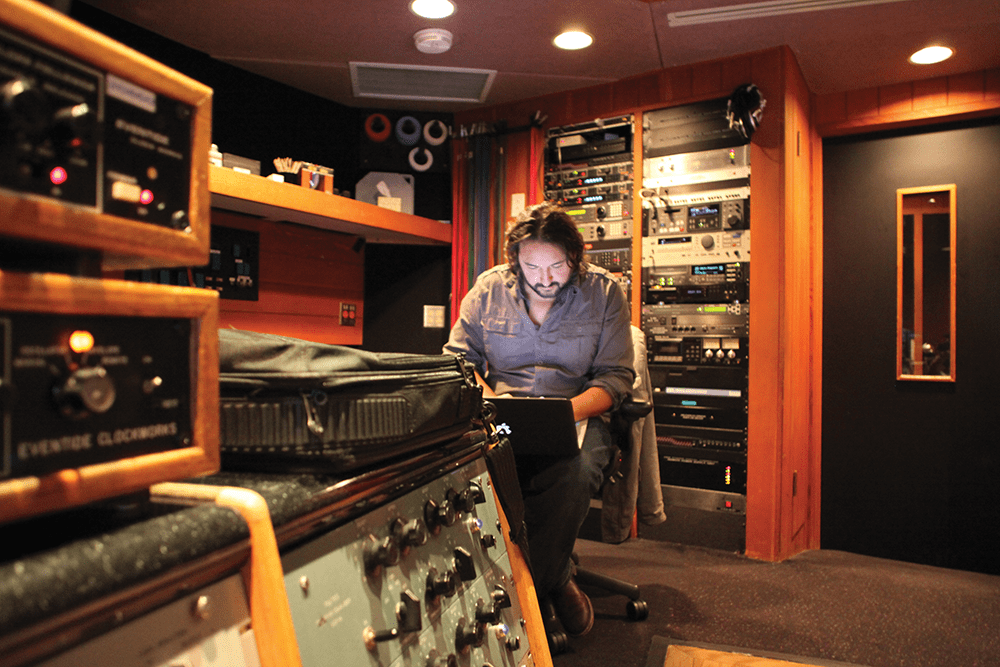
The album’s success led to wider mainstream awareness of Daft Punk and a greater critical appreciation of their music-making approach, being intensely creative in the studio while also working with high-profile artists such as Pharrell on chart-straddling hits such as Get Lucky.
When asked how he reflects on his time working on the record with the robots, Peter Franco says: “To tell you the truth, we were surprised by the success of the album. We sort of knew Get Lucky was a good song, but the album was quite experimental in places, so it getting the critical and commercial reception that it did really surprised us.
“I guess we were in the studio for such a long time working on it – for years, working on these tracks, you know – you’re doing what you love and then all of a sudden you’re done and you let it out to the world and you sort of think: ‘Well, I hope some people like it.’
“We didn’t expect the recognition, or the enormity of it,” Peter concludes. “None of the team could believe that it was as well received as it was. We didn’t know – ultimately, the making of the record is the story of a bunch of creative people doing what they loved.”